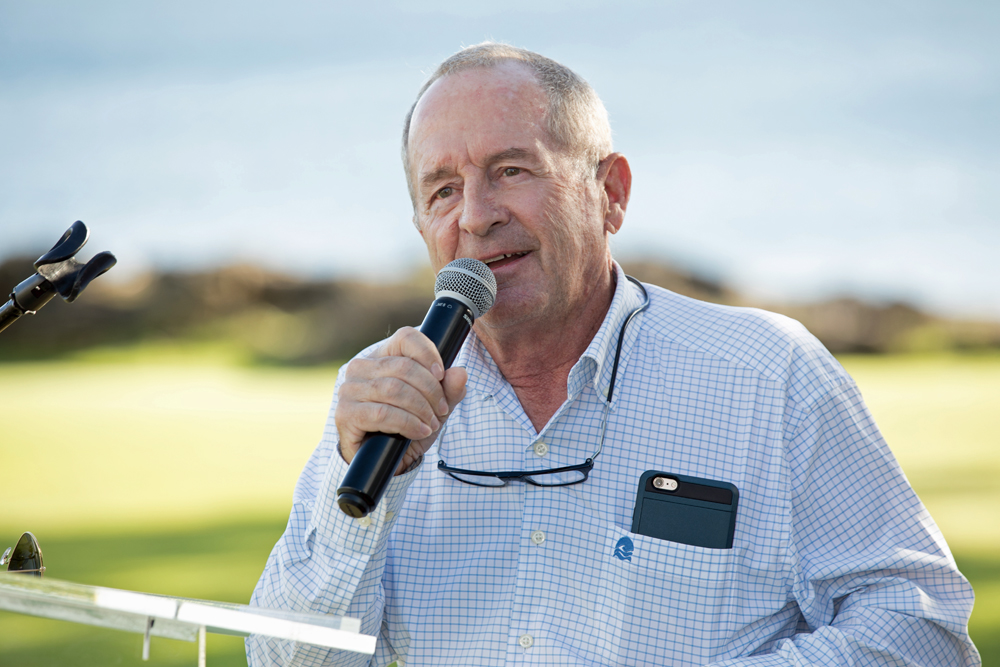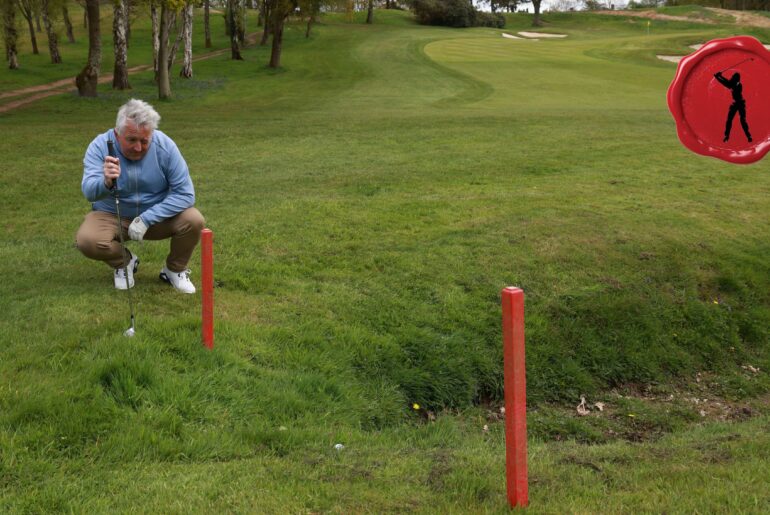 Gilles Gagnon
Gilles Gagnon
LA ROMANA, DOMINICAN REPUBLIC | Alfy Fanjul, who with other members of his family controls a sugar and real estate empire worth billions of dollars, well remembers the first time he met Gilles Gagnon.
“It was maybe 40 years ago, when Gilles was running the golf operation at Casa de Campo, and I was negotiating to buy that property from Gulf & Western,” said the Cuba-born Fanjul. “He and I chatted, and at some point, I said, ‘I don’t know who in the world would have ever hired a left-handed hockey player from Canada to be the golf pro.’ ”
Both men chuckled at the friendly gibe. And it was not long after the Fanjuls completed the purchase of the 7,000-acre property, which included the acclaimed Teeth of the Dog golf course, that he realized just what a genius move the previous owner had made.
“Gilles is smart, extremely hardworking and never seems to get upset,” said Fanjul, whose company has owned Casa de Campo since 1984. “He also knows how to solve problems and entertain customers. What more could you ask for?”

As for the now 76-year-old Gagnon, whose official title these days is golf director emeritus and senior director of golf sales, he feels he could not have had a better place to work. “The Fanjuls have treated me so well,” said the PGA of America life member. “The Dominicans are great, too, and I love the weather down here as well as how safe and quiet it is. And while Casa de Campo was very remote when I started in 1980, it now has about every amenity you could possibly want.”
Those include polo, shooting and fishing. Great restaurants, too, as well as some 250 hotel rooms and 50 villas, one of the best marinas in the Caribbean and an expansive sugar-sand beach. Then, there is the golf, with all 90 holes designed by Gagnon’s good friend, the late, great Pete Dye.
“People often ask when I am going to retire,” added Gagnon, who was inducted into the Caribbean Golf Association Hall of Fame in 2019. “But I cannot imagine stopping what I have been doing.”
“My dad left when I was about 8 years old. He just took off. My mom’s parents lived upstairs from us. She worked as a bank teller, and while we always had enough food to eat, money was tight.” – Gilles Gagnon
Even harder to fathom when you consider his anything-but-ideal upbringing is how Gagnon established such an exalted position in the royal and ancient game.
Born in Montreal in the fall of 1948, the native French speaker grew up in a one-bedroom apartment with his mother, Denise, and brother, Pierre.
“My dad left when I was about 8 years old,” he said. “He just took off. My mom’s parents lived upstairs from us. She worked as a bank teller, and while we always had enough food to eat, money was tight.”
As was the case with most kids in Canada, Gagnon fell in love with hockey.
“We played on the ponds a lot,” he recalled. “It was not an easy sport for me because it was so expensive. I taped my hockey sticks from top to bottom to make sure they lasted longer.”
A left-handed shot, he grew to be good enough to compete in Canadian junior hockey leagues with several future NHL stars, among them Gilbert Perreault, Rejean Houle and Marc Tardif.
From there, he found his way to Michigan State University in the States.
 Gilles Gagnon called his time at Michigan State the “chance of a lifetime,” and it helped lead to his job as the golf coach at Colgate. Courtesy Gilles Gagnon
Gilles Gagnon called his time at Michigan State the “chance of a lifetime,” and it helped lead to his job as the golf coach at Colgate. Courtesy Gilles Gagnon
“My grades in high school were not very good, and I barely spoke English,” Gagnon said. “But I passed an ACT test, probably because I was a good guesser, and started at Michigan State as a freshman. I read a lot of books and relied heavily on a dictionary to do my homework. In about 10 weeks, I was able to read, write and speak English pretty well.”
Gagnon describes Michigan State as a “chance of a lifetime.” For the bachelor’s degree in physical education he earned, to be sure. And also the high-level hockey he was able to play for the university.
“I was the leading goal scorer in the nation my junior year,” said Gagnon, who wore No. 10 on the back of his hockey sweater and celebrates that bit of history to this day by marking each of his golf balls with the same number. And he left Michigan State in 1972 as its all-time leading scorer.
A center, he stood 5 feet 5 and tipped the scales at 145 pounds. Due to those measurables, Gagnon was invariably the smallest man on the ice. But he played the position – and the game – much bigger than he actually was.
“I had picked up the game at Michigan State, playing left-handed just as I had in hockey. I was about a 5- or 6-handicapper by the time I got to Colgate.” – Gilles Gagnon
After MSU, Gagnon skated for a spell with the Port Huron Wings in the rough-and-tumble International Hockey League. “I was getting beat up pretty badly on the ice,” he said. “Then one night, the team bus slid off the interstate and down an embankment, and I had to kick out the window to escape. I took that as a sign and decided to stop playing.”
In 1975 and just 27 years old, he became the assistant varsity hockey coach at Colgate University in upstate New York. And then he started running the school’s golf course as well as coaching the golf team.
“I had picked up the game at Michigan State, playing left-handed just as I had in hockey,” Gagnon said. “I was about a 5- or 6-handicapper by the time I got to Colgate. The golf coach had just retired, and the people at the university wondered if I could take on that job as well. I had nothing to do in the summer, so I said sure. The course was called Seven Oaks, and it was the first layout Robert Trent Jones ever designed.”
The track also hosted the 1977 NCAA Championship, which featured future U.S. Open winner Scott Simpson winning the individual title for the second year in a row. As for Gagnon, he helped organize the event and served as the host professional.
Three years later, he interviewed for – and then accepted – the job as head golf professional at Casa de Campo, which then had only two courses (Teeth of the Dog and the Links) and had become a golf resort after initially operating as a corporate retreat for Gulf & Western executives and their guests.
 Teeth of the Dog at Casa de Campo
Teeth of the Dog at Casa de Campo
“They gave me a two-year contract, and paid me $24,000 a year,” Gagnon recalled. “They gave me a house, too. There was no TV, and you had to go through a phone operator if you wanted to make a call. And there wasn’t a grocery store anywhere close by. The previous director of golf had left about three or four months before me, and the place was a mess. There was nothing worth selling in the pro shops, and the carts were beat up and smelled like battery acid.”
To make matters even more challenging, Gagnon’s first wife, Pamela, was pregnant when they moved there, with the first of their two daughters, Jennifer, being born in the nearby town of La Romana on December 8, 1980.
(A second daughter, Dominique, came into the world four years later and eventually became a good enough golfer to qualify for four USGA championships, including the 2001 U.S. Women’s Open.)
But even after that big move and the birth of his first child, Gagnon settled nicely into his new environs – and his new job. As a golfer, he enjoyed teeing it up on the resort’s courses. By his own admission, however, he never cared much for teaching, developing instead a passion for staging tournaments at Casa de Campo that over the years have brought thousands of golf professionals and amateur players to the sun-soaked getaway on the southern shore of the D.R.
“I organized the first of those in 1981,” said Gagnon, who long ago became fluent in Spanish and can also converse quite comfortably in Italian. “And we called it the Casa de Campo Open. Forty-four years later, it is still going on, and we usually get as many as 300 people in the field.”
“In many ways, it’s worked out perfectly. I work on those sorts of projects every day until 1:30 p.m., seven days a week. Then, I go play golf.” — Gilles Gagnon
“I created a lot of tournaments,” he added. “We put on close to 20 a year of our own and also have so many others from the outside. I liked running them, but I also saw the tournaments as a way of protecting myself. They made me more needed to the resort, and made me more than just a golf professional.”
Some eight years ago, Gagnon stepped back a bit from his work, becoming the golf director emeritus. But he continued to develop business through his tournaments and other sales and marketing initiatives.
“In many ways, it’s worked out perfectly,” he said. “I work on those sorts of projects every day until 1:30 p.m., seven days a week. Then, I go play golf.”
The timing was good in another very important way, because shortly after Gagnon took on that modified role, doctors diagnosed his second wife, Merrilee, with cancer.
“She’s been battling that for seven years,” he said. “She’s gone through six surgeries, with doctors taking four or five things out of her lungs. It’s been tough, but she’s hanging in there. Not a whole lot stops her.”
Fanjul appreciates how difficult that fight has been for Merrilee, and also the great support Gagnon has provided along the way.
“Gilles has certainly been there for her,” he said. “And he has always been there for us.”
© 2025 Global Golf Post LLC







